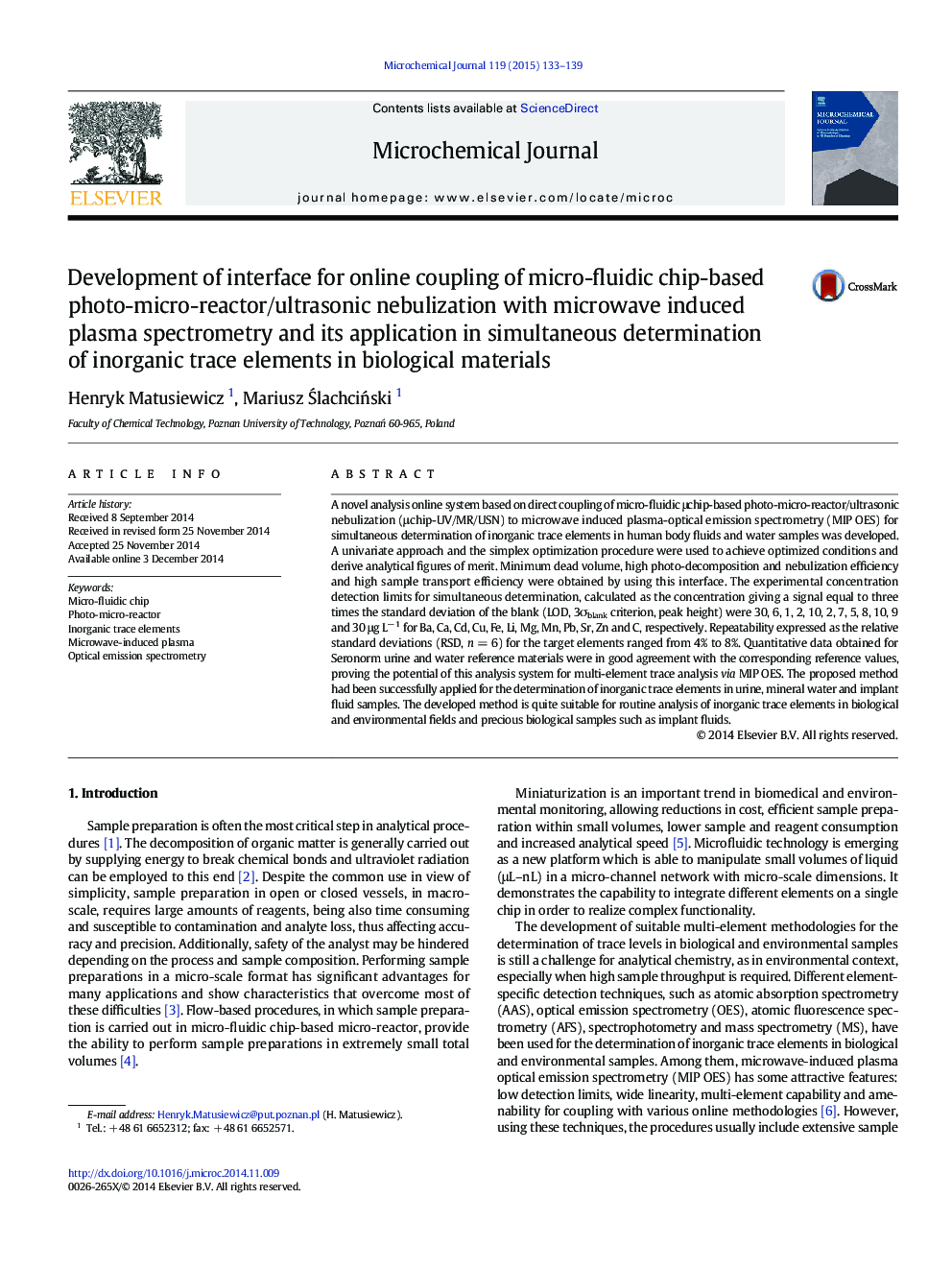| Article ID | Journal | Published Year | Pages | File Type |
|---|---|---|---|---|
| 1227741 | Microchemical Journal | 2015 | 7 Pages |
•A method for the simultaneous determination of 12 elements was developed based on the hyphenated μchip-based photo-micro-reactor/ultrasonic nebulization coupled with MIP OES.•The potential to develop analytical procedure is shown in this work.•The developed method offered advantages including short decomposition time (~ 15 min), low sample and reagent consumption, high sensitivity and low detection limits.•This manuscript describes a method to simultaneously determine 12 elements by μchip-UV/MR/USN-MIP OES.
A novel analysis online system based on direct coupling of micro-fluidic μchip-based photo-micro-reactor/ultrasonic nebulization (μchip-UV/MR/USN) to microwave induced plasma-optical emission spectrometry (MIP OES) for simultaneous determination of inorganic trace elements in human body fluids and water samples was developed. A univariate approach and the simplex optimization procedure were used to achieve optimized conditions and derive analytical figures of merit. Minimum dead volume, high photo-decomposition and nebulization efficiency and high sample transport efficiency were obtained by using this interface. The experimental concentration detection limits for simultaneous determination, calculated as the concentration giving a signal equal to three times the standard deviation of the blank (LOD, 3σblank criterion, peak height) were 30, 6, 1, 2, 10, 2, 7, 5, 8, 10, 9 and 30 μg L− 1 for Ba, Ca, Cd, Cu, Fe, Li, Mg, Mn, Pb, Sr, Zn and C, respectively. Repeatability expressed as the relative standard deviations (RSD, n = 6) for the target elements ranged from 4% to 8%. Quantitative data obtained for Seronorm urine and water reference materials were in good agreement with the corresponding reference values, proving the potential of this analysis system for multi-element trace analysis via MIP OES. The proposed method had been successfully applied for the determination of inorganic trace elements in urine, mineral water and implant fluid samples. The developed method is quite suitable for routine analysis of inorganic trace elements in biological and environmental fields and precious biological samples such as implant fluids.
